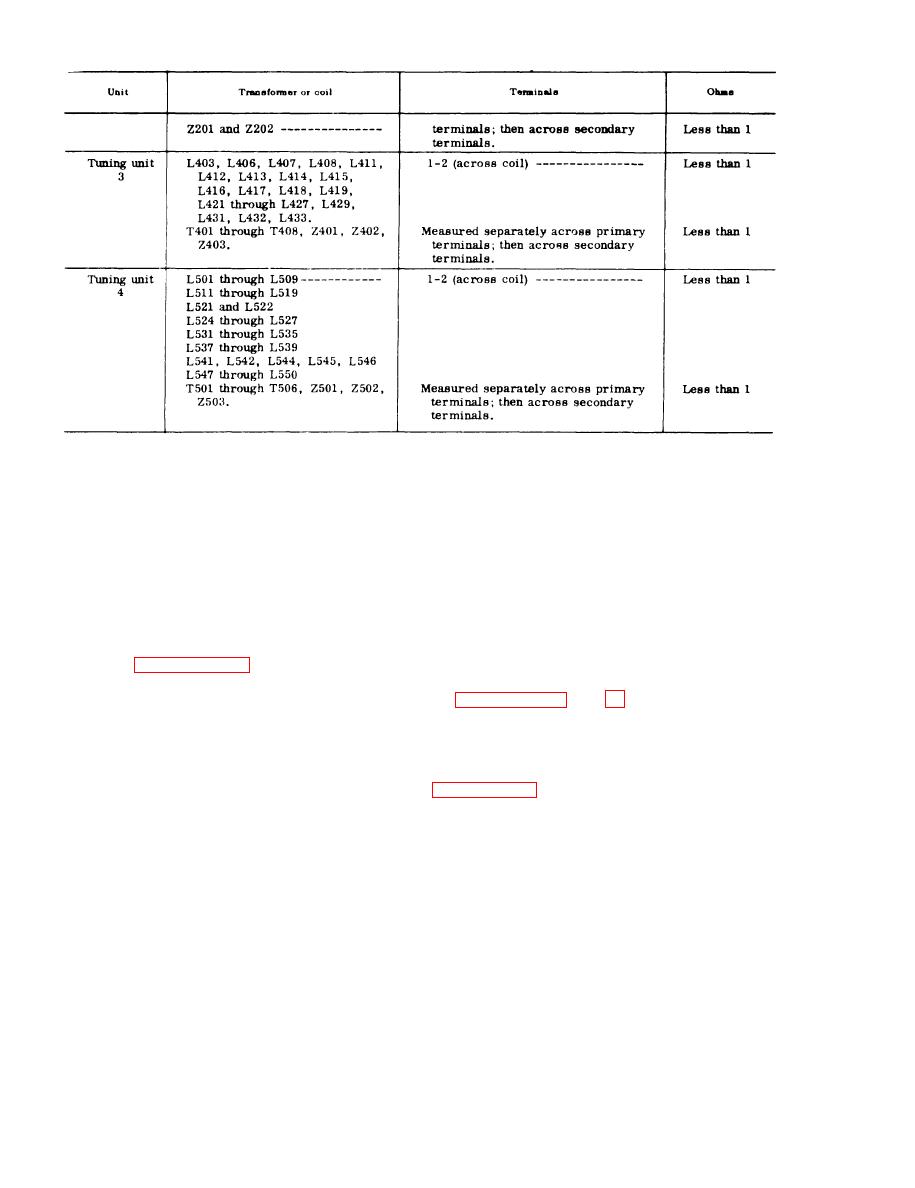 |
|||
|
|
|||
|
|
|||
| ||||||||||
|
|  equal value. Trouble in a circuit or stage
70. Signal Substitution Technique
s o m e t i m e s might not cause changes in
v o l t a g e and resistance measurements at
a. General. Signal substitution requires
the tube socket. The instructions included
a source of if. and rf signals. In addition,
in this paragraph are merely a guide and
t h e headset supplied with the test set is
s h o u l d suggest other procedures such as
used to monitor the signals. A multimeter,
v o l t a g e and resitance measurements on
a tube tester, and a crystal diode tester
i n d i v i d u a l parts.
a r e needed to isolate the defective part
b. Adapters and Connectors. Adapters
a f t e r the faulty stage has been indicated
and connectors may be necessary in order
by signal substitution. The equipment
to connect the tuning unit signal generator
listed in paragraph 65 is suitable for this
to various jacks in the tuning units. Refer
purpose. In the tests indicated, ground one
to paragraphs 81 and 82 for information on
side of the signal generator output to the
t h e adapters and connectors required.
receiver chassis and connect the other side
c. Signal Substitution Charts. D i r e c -
t o the receiver point as directed. When
tions for signal substitution for each tuning
working back from the output to the input
u n i t are contained in the charts within
s t a g e s , decrease the output of the signal
generator as necessary to maintain an
t a i n s specific instructions for a partic-
o n s c a l e m e t e r i n d i c a t i o n . I f possible,
ular section of the tuning unit, such as the
c o m p a r e the signal output with that of
if. amplifier, the if. step attenuator, the if.
a test set known to be in good condition.
preamplifier (for tuning units 3 and 4 only),
Misalignment of one or more stages of the
and the rf tuner section. If the items listed
r e c e i v e r will cause reduced output. Mis-
in the Possible trouble column are not at
alignment of the local oscillator may pre-
f a u l t , make voltage and resistance meas-
vent the tuner from developing the hetero-
urements to locate the defective parts. Ap-
dyned signal. When the trouble is localized
p l y the signal that is indicated in the
t o a stage, first test the tube or crystal
Signal frequency c o l u m n. Monitor the
diode and then measure the voltages;
f i n a l output by connecting the headset,
finally, measure the resistance at the tube
t h r o u g h the headset cord, into the main
s o c k e t terminals. Disconnect a suspected
unit front-panel PHONES jack. If an audio
leaky capacitor and replace it with one of
154
|
|
Privacy Statement - Press Release - Copyright Information. - Contact Us |